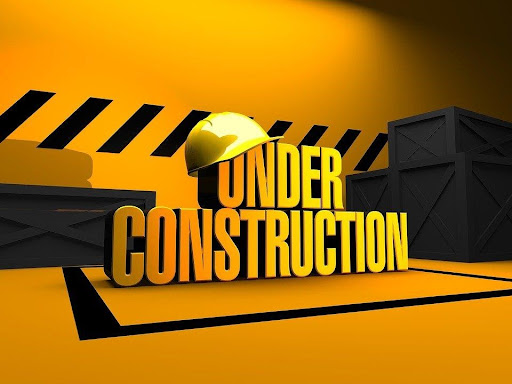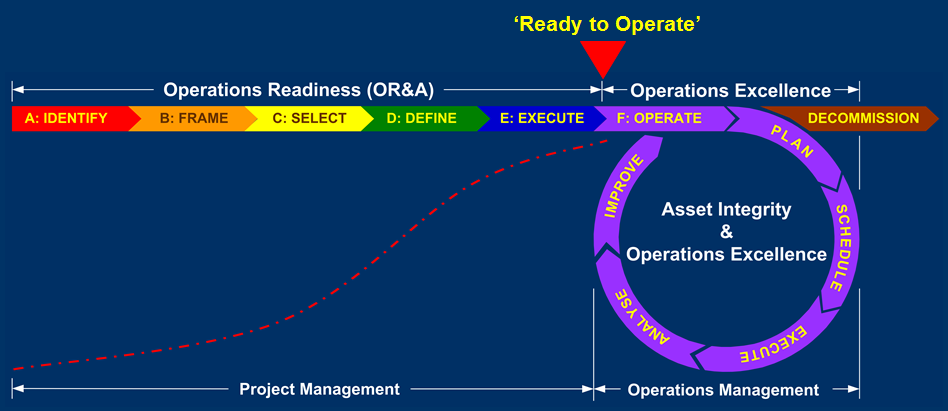
How a building project team hands over the facility to the operations team could mean the difference between a well-designed project and a poorly managed facility. Without sufficient operational readiness, the facility could run into high maintenance costs and have extensive safety issues.
Implementing a two-step approach that combines operational readiness and project commissioning early in the building process reduces costly risks, increases the facility's life, and helps in securing more funds for future projects.
Below, we explore operational readiness activities to better prepare the operations team for a successful start running the new facility.
What is Operational Readiness
Operational readiness is a structured process of ensuring the operations team acquires the tools, skills and documentation to operate and maintain a newly completed project.
Therefore, it’s crucial to begin the operational readiness process early in the project planning and execution phase. Additionally, starting early in the project helps in budgeting for additional resources needed and mitigates unforeseen circumstances.

(Image source: OR&A Ltd.)
To ensure an efficient building project that meets the standards required, it's advisable to run operational readiness procedures throughout the five stages of the building process. The five phases include:
- Preliminary studies
- Design and engineering
- Procurement
- Construction
- Project closeout and hand over
Whereas the pre-commissioning activities and the actual commissioning process can start during the project closeout phase, the best practice for operational readiness is to run it throughout the building project. This approach ensures the facility handover is based on accurate documentation collected throughout the project.
In terms of role assignment, most readiness activities are performed by the client's team, while an external specialist often does the commissioning. But in essence, combining operational readiness and commissioning is all about ensuring proper documentation, implementation, and transition for each building phase to simplify the project handover to the client and operations team.
The commissioning team ensures all critical documentation is readily available for the operations readiness team when the time comes to hand over the facility.
Components of an Operational Readiness Process
A number of factors are involved in operational readiness that ensure a successful transition from project implementation to operations. They include:
Documentation:
Documentation can be complex and confusing without a structured tool for collating project documents. Additionally, the operations team will use your project's documentation for reference during the handover process and subsequent facility management. The critical documents needed by the operations team include:
1. Historical Project Data and Standard Operating Information
The operations team will require your project's standard operating procedures, day-to-day facility management information, historical information for each building phase. This would include specifics such as Safe Working Procedures (SWPs), Lockout/Tagout (LOTO) procedures, equipment maintenance procedures, and other information relevant to facility management. Historical data is also critical for documentation because the operations team can reference it for clarity on various aspects of the project.
2. Facility Documents
Facility documentation highlights the day-to-day procedures and practices that ensure the smooth running of facility activities. This data will likely include equipment O&M manuals, system test procedures, building structure, electrical and plumbing systems.
3. Building Site Operational and Support Personnel
Another important aspect of your operational readiness process is having sufficient staff to handle the operations and facility management. Operations and commissioning specialists can collaborate on staffing since they were involved throughout the building project. In addition, the commissioning team can choose to be on board with the project as an operational team since they already have a comprehensive view.
A common challenge experienced when building projects come to a close is participants start scouting for opportunities elsewhere, making the project handover process much harder. Therefore, it’s essential to have a staff retention plan to ensure you don't lose talent.
4. Maintenance and Service Contracts
Planning for how and who will carry out maintenance work is also part of operational readiness. For example, you need to have all maintenance contracts in place before you start preparing the team for project handover, so they know who handles maintenance work.
Also, examine the agreements to understand how much work goes to in-house teams and how much will be done by external service providers so you can assign tasks appropriately.
Planning for how and who will carry out maintenance work is also part of operational readiness. For example, you need to have all maintenance contracts in place before you start preparing the team for project handover, so they know who handles maintenance work.
Also, examine the agreements to understand how much work goes to in-house teams and how much will be done by external service providers so you can assign tasks appropriately.
Central Control Operations
Each facility has a central control system that monitors and integrates the new facility into the existing system. In most instances, you’ll need to prepare the operations team on the following tools during the operation readiness process:
- Supervisory Control and Data Acquisition (SCADA) for monitoring and analyzing equipment performance
- An Emergency Management System (EMS) for managing security and facility access
- Communication tools and procedures for reporting outstanding issues or system configuration requests
- Data processing and backups for information that flows through the central control system
Safety and Environment Standards
Establish the procedures put in place for implementing and managing environmental and safety standards. You'll need to train the operations team with these procedures before handing over the facility from the project team:
- Emergency response procedures
- Environmental compliance standards and permits
- Personal safety standards
- Hazard material handling plan
- Access management procedures
Asset and Equipment Management System
An Equipment Asset Management system contains all operational data for managing the new facility. This system includes equipment configurations, IT system inventory, security data, nameplate information, and other necessary information for smooth facility operations.
Implementing the components above into your operational readiness activities ensures the project’s transition is done within the timelines set and provides smooth management of the new facility.
Successful commissioning depends on how comprehensive the operational readiness process is. Download our free guide to learn more about how to improve your operational readiness and commissioning techniques.
FAQs
What’s the difference between commissioning and operational readiness?
Commissioning verifies that systems are installed and functioning as intended. Operational readiness ensures the owner's team is fully prepared to operate and maintain the facility post-handover. Both are critical for a smooth transition but serve different purposes.
When should commissioning and operational readiness activities start?
Ideally, both should begin in the design phase and run in parallel throughout construction. Starting late often leads to missed documentation, incomplete testing, and rushed handovers.
What documentation is critical for a successful handover?
Key documents include:
- Commissioning test reports
- O&M manuals
- Equipment certifications
- Training records
- SOPs and emergency procedures
Without this, operations teams lack the information to run the facility safely and efficiently.
Who is responsible for executing operational readiness activities?
Typically, the client’s project or operations team handles readiness, while an external party manages commissioning. However, tight coordination between both is essential to avoid gaps in training, documentation, or system understanding.
What are the risks of poor commissioning or readiness?
Delays in occupancy, safety hazards, high maintenance costs, system downtime, and poor asset performance. Many of these issues stem from inadequate coordination between construction, commissioning, and operations.
